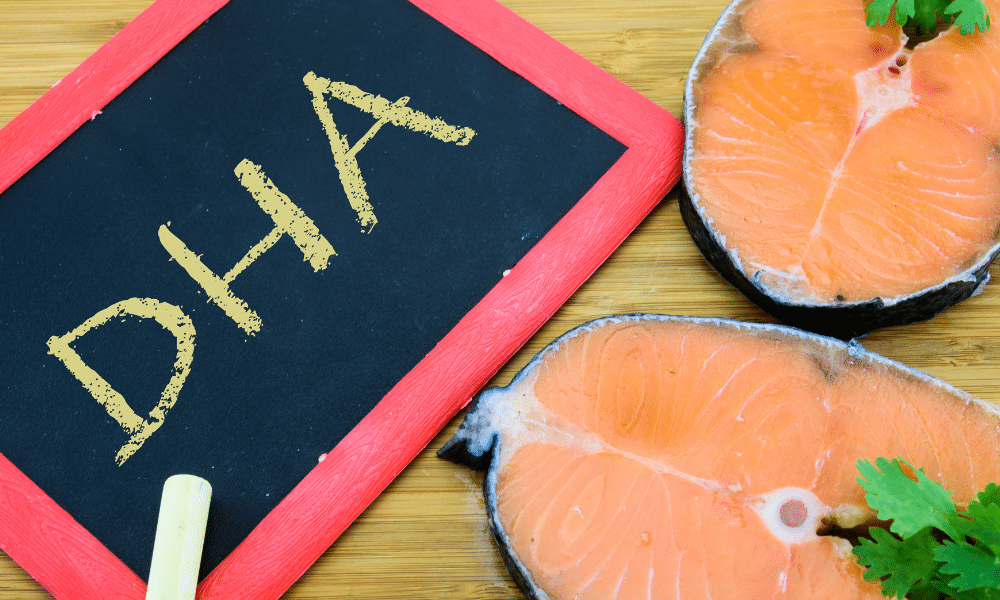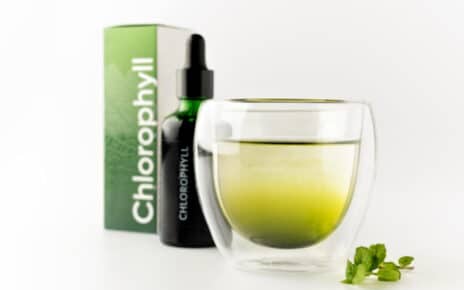How To Increase DHA In Breast Milk All You Need To Know About DHA
Breastfeeding mom’s diet and baby‘s brain development
Many people know how the fatty acid DHA is now added to some infant formulas because it is a substance that is important for baby’s brain growth. But did you know you can Increase DHA level in your breast milk by your diet?
Good fats and brain development

Breastfeeding has been shown to boost a child’s intelligence. But did you know about the ONE nutrient affecting a child’s IQ where the breastfeeding mother’s diet has a lot to do with how much of that nutrient the child receives?
To answer those questions, we need to know about essential fatty acids. In this article, we have discussed in detail what ALA, LA, and DHA is.
Brain and DHA
The brain is about 60% fat by weight, and DHA and other omega-3 fatty acids are very abundant. A lot of the fat is in the neurons’ cell membranes and in the protective myelin sheath that covers them. The types and proportions of fats in the cell membranes determine how effectively the brain cells communicate. A diet deficient in omega-3 fats also alters the brain’s energy metabolism.
Scientists are now revealing how all kinds of mental disorders including Parkinson’s disease, depression, Alzheimer’s disease, dementia, and schizophrenia are connected with deficiencies in the essential fatty acids, and with an imbalance between omega-6 and omega-3 fats For example, children with attention deficit hyperactivity disorder (ADD/ADHD) have been shown to have low levels of DHA in their blood.
DHA is crucial to the optimal development of the brain in infancy and childhood. Breast milk boosts the brain growth because it contains lots of DHA − provided that the mother herself eats things rich in omega-3 fatty acids. So DHA is the main reason breastfeeding has been shown to increase a child’s intelligence − or maybe we should say that bottle feeding produces children with less-than-optimal brain growth and intelligence.
Standard infant formulas in the USA have practically no DHA. Some unique formulas have it, and studies have shown that infants fed these formulas do better cognitive tests than those fed standard formulae.
The DHA levels of breast milk vary a lot according to the diet of the breastfeeding mother. In a Danish study, consuming fish or fish oil increased the amount of DHA found in the breast milk, and the researched noted large fluctuations in the levels of omega-3 fatty acids in breast milk. The milk of Nigerian women, whose diet is rich in nuts, has a high omega-3 fat content, significantly more than that of German mothers.
A study from Connecticut found that babies of mothers with higher DHA levels showed significantly more quiet sleep and less active sleep and less sleep-wake transition than those of mothers with lower DHA levels. In other words, they slept better. This was interpreted as indicating greater central nervous system maturity in the higher DHA group. That is exciting news for all pregnant and nursing mothers since the baby’s sleeping pattern affects everybody in the family.
Another important note for pregnant women is that women who develop postpartum depression have lowered levels of DHA. The developing fetus has drawn many maternal sources, and if the woman does not eat foods rich in omega-3 fats, she risks the baby’s health and her mental health.
The researchers who found low DHA levels in depressed mothers suggested that “increasing the dietary DHA intake during pregnancy and postpartum, seems prudent.“ Books always tell pregnant women that you need to eat your yellow vegetables, dark greens, and proteins, but mention NOTHING about the omega-3 fats!
How To Increase DHA In Breast Milk

Children who don’t nurse anymore can get DHA from fatty cold-water fish such as mackerel, salmon, trout, and sardines (mackerel is not recommended because of mercury levels). Low-fat fish have only small amounts of DHA. Another source is omega-3 fortified eggs from chickens that have been fed flaxseed or fish meal.
Dr David Williams recommends 1-2 yolks from these eggs for children under two to get the daily 250 mg of omega-3 fatty acids that breast milk might contain. You would need roughly 8 yolks from regular eggs − showing what a difference the chicken’s diet makes in its eggs’ nutritional value!
DHA is not an essential fat (at least not for adults) because the body makes it from alpha-linolenic acid (ALA). But ALA is ESSENTIAL for children and adults alike! The best food source of ALA is flax oil.
Flax oil should come in a dark sealed bottle and be refrigerated because light, oxygen, and heat destroy the essential fats. Dr David Williams recommends the following amounts of flax oil for NON-nursing children: 1-6 months old, 1/4tsp daily; 6-12 months 1/2 tsp daily; 1-2 years 1-2 tsp daily, and over 2 yrs 2 tsp daily.
You can add some flax oil to salad dressings, smoothies, yoghurt, etc. to provide ALA for the whole family (but don’t fry with it). Of course, the best bet is to let your child breastfeed for at least 2 years and beyond and ensure the mother’s breastfeeding diet is adequate. Then after weaning the child can consume flax or flax oil to get the alpha-linolenic acid.
If you opt for flaxseed, you need a little coffee grinder to grind the seeds because they are hard to chew properly. Ground flaxseed should be stored in airtight container in the fridge because the ALA oil in it goes rancid very quickly when exposed to air. Add ground flaxseed to oatmeal, non-fat yoghurt, or fruit smoothies. You can also add it to bread or muffins and bake with it. The whole flaxseed also has other health benefits, like promoting useful bowel function and protecting against breast cancer and the effects of environmental estrogens.
Trans fats – the danger
Another often overlooked fact about fats is the danger of so-called trans fats, which are formed when vegetable oils are heated in high temperatures, such as frying or making hydrogenated oils. Hydrogenation is a process where unsaturated fatty acids in liquid oils are transformed, so they are stable in room temperature. If hydrogenation were found today, it would not be approved for all the harm the trans fats do in the human system.
Where are they found? Any food item containing partially hydrogenated oils has trans fats in it. This includes some margarine, shortening, and most commercially made cookies, crackers, candy bars, and more. Another primary source of trans fats is any food fried in vegetable oil containing polyunsaturated fatty acids, such as French fry or any food you fry in your kitchen.
Since 2006, food labelling in the USA is required by law to show the number of trans fats in the product. However, the law concerning this has a big loophole: if the serving size of that product contains less than 0.5 g of trans fats, they can label it as containing zero grams of trans fats!
Manufacturers can reduce the serving size to meet this 0.5 g limit, and then list the trans fat content zero. So be sure to check the ingredients list. If the words “partially hydrogenated” appear in the ingredients, the product contains trans fat.
In a Canadian study, trans fatty acids (TFAs) averaged 7.2% of the total fatty acids in breast milk. The primary source of trans fats was partially hydrogenated vegetable oils. The researchers also found that the levels of LA and ALA (the essential fatty acids) were inversely related to the total trans fats, which means that the elevation of TFAs in Canadian human milk is at the expense of essential omega-3 and omega-6 fatty acids [8].
Trans fats are shaped differently than the corresponding normal fats. When rat mothers were fed trans fats, those ended up in their puppies’ brains, and there is no reason to believe that it wouldn’t happen in humans [9]. But since trans fatty acids are shaped differently, they don’t fit the nerve cell membranes and the normal omega-3 fats, so they cause the nerve cells to communicate less efficiently, and the brain cannot function optimally.
Trans fats also increase cholesterol and blood fat levels, notably (factors in heart disease), lower immunity, are associated with cancer, and do all kinds of havoc in the human body.
So this warrants us of the grave danger of hydrogenated vegetable oils found in margarine, shortening, cookies, candy bars, chips, crackers, and a horde of other processed foods, AS WELL AS of frying anything in vegetable oil. The omega-3 and omega-6 fatty acids in vegetable oils are delicate and easily destroyed by heat (which is why you should only consume cold-pressed oils). You can fry safely if you use saturated fats like butter, lard, or coconut or palm kernel oil. They are heat-resistant and don’t change into trans fats.
Proper Brain Nutrition

Cow’s milk is intended explicitly for calves that need to grow strong bones with lots of calcium but don’t need to grow large brains. Cow’s milk is low in essential fatty acids, so relying on cow’s milk for children’s nutrition cannot produce proper brain development. Try nut & seed milk made by blending nuts and seeds with a honey touch and straining the mixture. You can use the pulp in baked goods, pancakes, and bread. Yummy!
People easily remember they need to eat vegetables and fruits to get vitamins, but many forget the staple foods and minerals. White flour products, white rice, white sugar, and “white” colorless supermarket oils have been either mostly or totally robbed of the minerals and other particular nutrients they once contained.
Vegetables and fruit are good for us, but it’s also essential that the STAPLE FOODS are WHOLESOME, full of minerals, and free of poisons: whole grains, seeds, nuts, fish, eggs, and meat.



